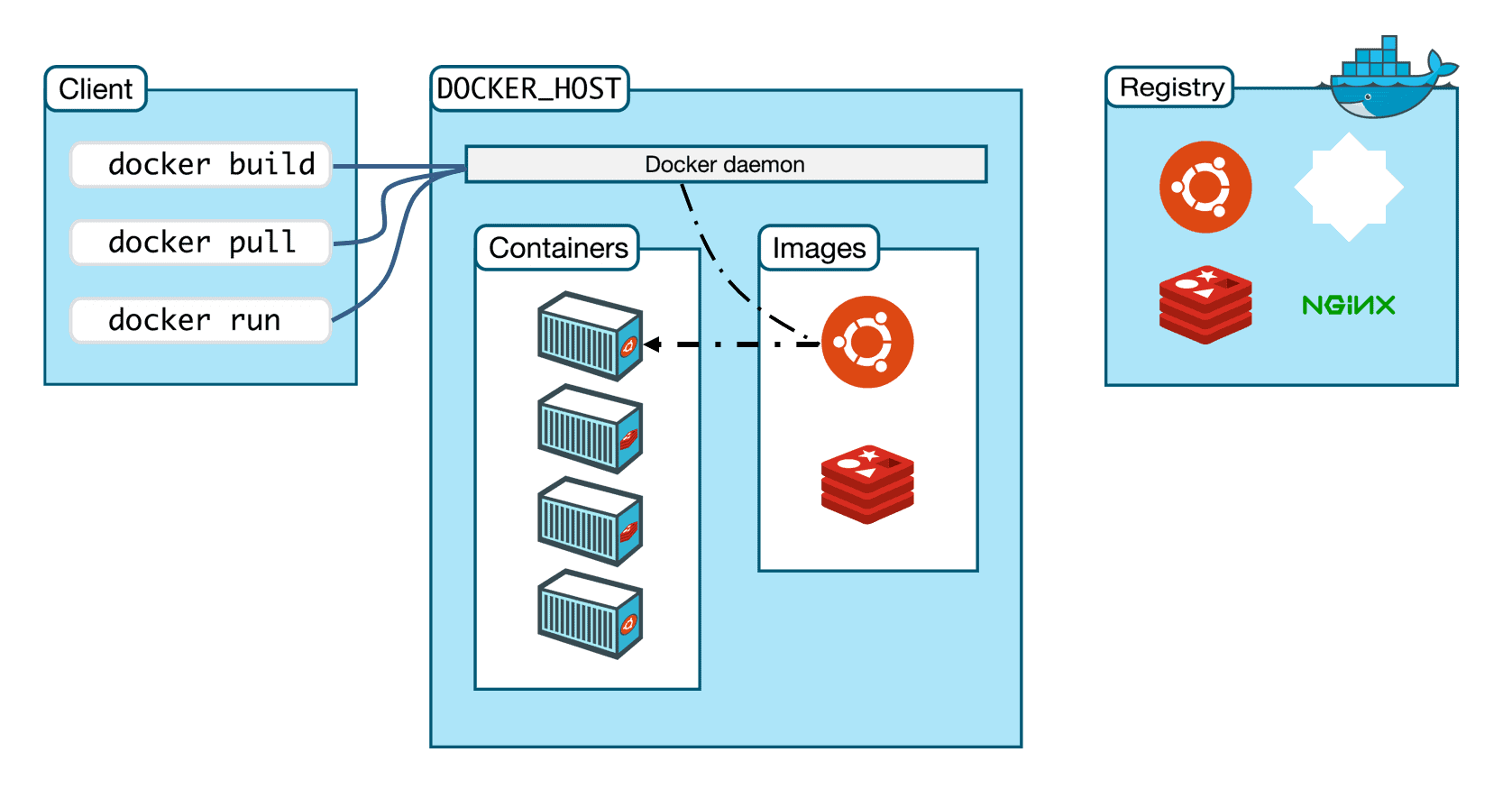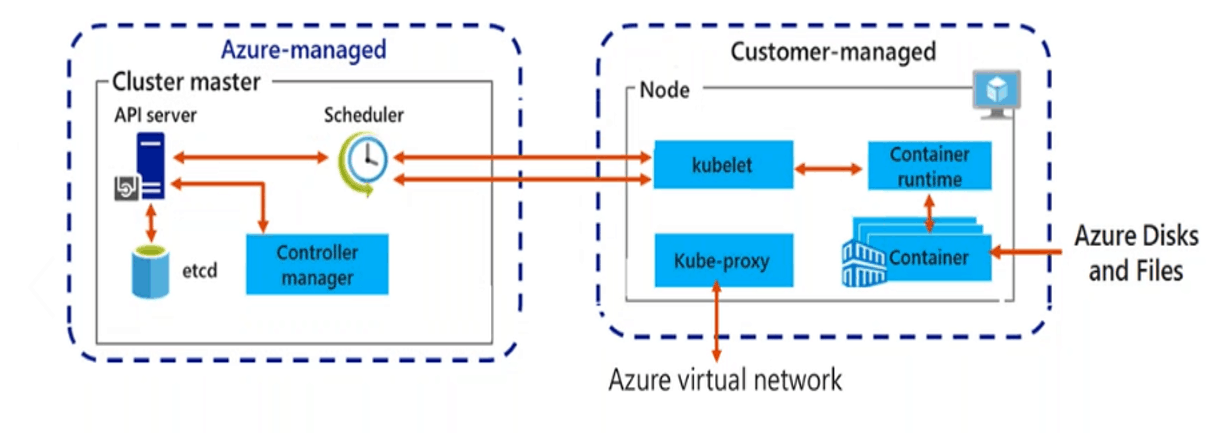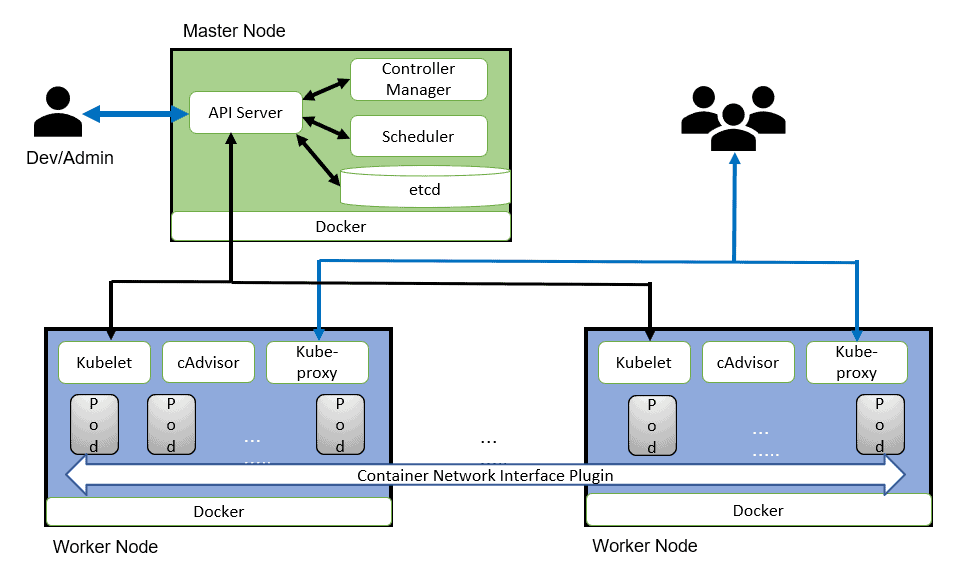COINTAINER INSTANCES :
Containers are a software package into a logical box with everything that the application needs to run. That includes the operating system, application code, runtime, system tools, system libraries, and etc. Docker containers are built off Docker images. Since images are read-only, Docker adds a read-write file system over the read-only file system of the image to create a container.
Difference Between Virtual Machine & Container (Docker)
The major difference between the VMs and Container is In VMs a hypervisor is used to virtualize physical hardware. Each VM contains a guest OS, a virtual copy of the hardware that the OS requires to run while in Containers Instead of virtualizing the underlying hardware, containers virtualize the operating system so each container contains only the application and its libraries.

Docker Architecture & Components
Docker uses a client-server architecture. The docker client talks to the Docker daemon, which used to building, running, and distributing the Docker containers. The Docker client and daemon communicate using a REST API, over UNIX sockets, or a network interface.

Azure Container Instances (ACI)
Azure Container Instances (ACI) is Microsoft PaaS (Platform as service) solution that offers the fastest and simplest way to run a container in Azure, without having to manage any underlying infrastructure. For container orchestration in Azure (build, manage, and deploy multiple containers) use Azure Kubernetes Service (AKS). You can deploy Azure Container Instances using Azure Portal, Azure CLI, Powershell, or ARM Template. Same as the docker registry we can push our images to Azure Container Registry (ACR) which is a private secure registry propose by the Azure platform.







